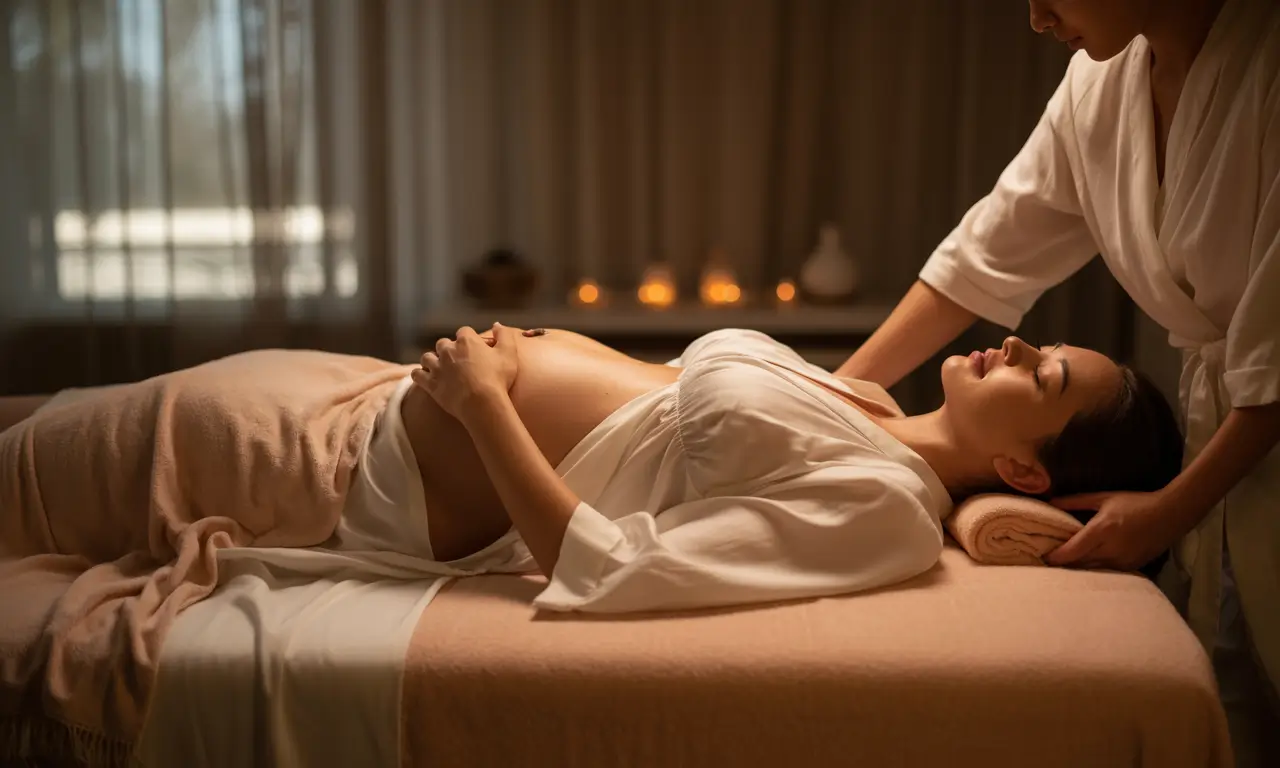
Frozen shoulder can make simple tasks feel like a workout. Sports massage will not cure it, but it can ease pain, reduce muscle guarding, and support a safe return of movement when used alongside medical care and exercise. Here is how it works, what to expect, and what to avoid.
Sports massage for frozen shoulder is best used to calm pain, relax tight muscles, and help you move a little more with less fear. It should feel targeted but gentle, never brutal. If in doubt, check with your GP or physiotherapist first.
Frozen shoulder, also called adhesive capsulitis, is a condition where the shoulder joint becomes painful and stiff. It often develops slowly and can last for many months. People notice night pain, trouble reaching overhead, and a general loss of shoulder movement. Many cases settle over time, but progress can be slow.
Frozen shoulder often passes through three broad phases:
Sports massage is focused soft tissue work for muscles, tendons, and fascia. It aims to reduce pain and tightness, improve comfort with movement, and support recovery. For frozen shoulder, the goal is not to “break adhesions”, but to calm sensitive tissues and reduce protective muscle spasm so that exercise is easier.
Sports massage can play a supportive role. It works best as part of a plan that also includes graded shoulder exercises and advice on daily activity.
Key benefits:
Honest limits:
Focus on pain relief. Short, gentle sessions can calm symptoms. Avoid strong stretches or long holds that cause a flare.
Work stays gentle but can cover more areas, such as the chest, upper back, and shoulder blade. Light movement work within a pain-free range can be added.
As pain settles, massage can support a gradual increase in movement. It pairs well with mobility and strengthening exercises set by a physiotherapist.
A good therapist will tailor the session to your pain level and phase. Common elements:
You should feel listened to. Pressure should be adjusted to your comfort. Lasting pain after a session is a sign the work was too strong.
Short, frequent movement is better than long, hard sessions. Stop if pain spikes or lingers into the next day.
A physiotherapist can give you a graded exercise plan. Massage helps you do those exercises with less pain.
Look for a therapist who is insured, qualified, and happy to work within your comfort. Good communication matters more than fancy techniques.
Most people notice short-term relief in pain or movement after a gentle session. Gains can be small at first, for example reaching a bit higher or sleeping a bit better. The aim is steady progress, not a quick fix. Regular review and small changes to your plan will help.
Sports massage will not cure frozen shoulder, but it can ease pain, reduce guarding, and make movement work more doable. Keep it gentle, combine it with a sensible exercise plan, and check in with a clinician if symptoms are severe or getting worse. The best results come from patience and consistent, pain-aware movement.

Are you on the hunt for a friendly and experienced sports massage therapist and personal trainer based in Hertfordshire and Essex?
I am super passionate about helping athletes and active individuals perform at their best.
My personalised sports massage therapy and personal training sessions are tailored to help you achieve your fitness goals while having fun in the process.
Whether you're recovering from an injury, looking to improve your performance, or maintaining your health during and after pregnancy, I am here to support you every step of the way.
Let's chat today and see how I can help you reach your fitness goals in the most enjoyable way possible!
Forever Balanced Therapy
Redwood, Epping Gn, Essex, CM16 6PU
5 mins from Harlow, Hoddesdon & Epping
Copyright © 2025. Forever Balanced Therapy. All rights reserved.